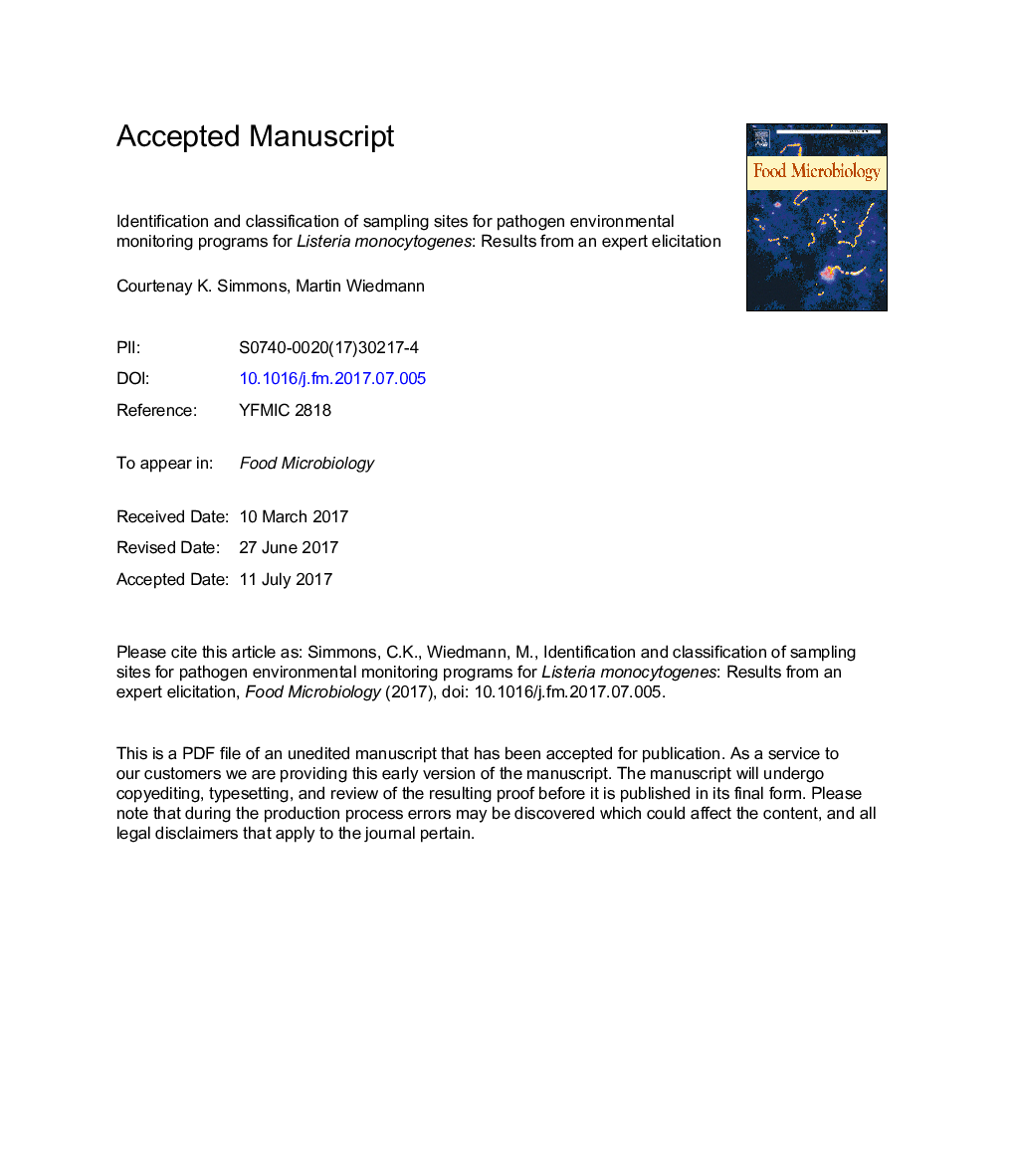| Article ID | Journal | Published Year | Pages | File Type |
|---|---|---|---|---|
| 8843476 | Food Microbiology | 2018 | 45 Pages |
Abstract
Pathogen Environmental Monitoring (PEM) programs for Listeria are important to reduce the contamination risk for exposed Ready-To-Eat (RTE) food products with L. monocytogenes. Specific guidance to identify appropriate sampling sites in individual facilities, including equipment and other sites, will facilitate effective L. monocytogenes control and PEM programs. Key goals of Listeria PEM programs are to (i) identify and eliminate niches that allow for Listeria growth and survival and (ii) verify and validate preventive controls such as sanitation programs and sanitation standard operating procedures (SSOPs), sanitary equipment and facility design. Here, an initial list of 77 sampling sites covering Zones 1-4 was assembled based on current literature and guidance documents with initial classification of sites into (i) Zones 1, 2, 3, and 4; (ii) likely niches or transfer sites, and (iii) verification sites or indicator sites. An expert elicitation that included responses from 16 food safety professionals was used to (i) refine sampling site descriptions and identify 6 new sampling sites that were not included in the original list, (ii) refine classification of sites (e.g., into niches versus transfer sites), and (iii) rank sites on level of importance from 1 to 5. The final sample site list includes sampling sites classified by zone and type of site as well as relative importance of site based on reviewer feedback. This document thus provides an initial set of sites that can be used by industry to help in the development or refinement of Listeria PEM programs. The availability of this ranked list of sampling sites should reduce barriers to development of science based Listeria PEM programs.
Keywords
Related Topics
Life Sciences
Agricultural and Biological Sciences
Food Science
Authors
Courtenay K. Simmons, Martin Wiedmann,
